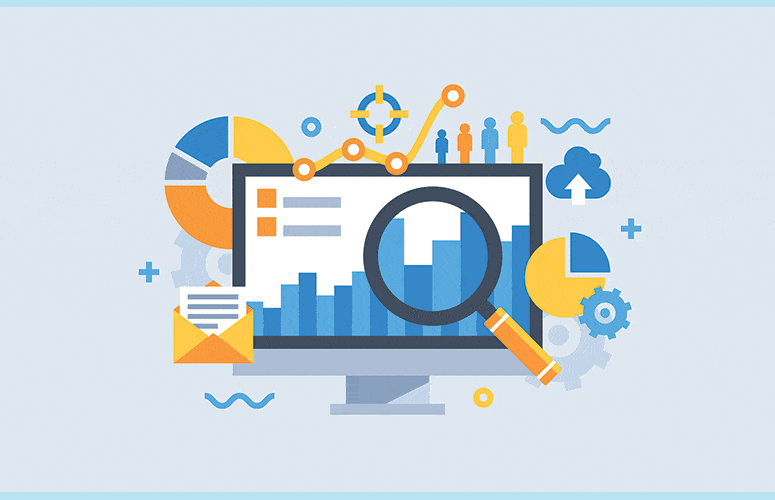
Data analysts must have a strong grasp of practical data visualization skills to paint a clear picture of complex data for a broader audience. Seeing the big picture by delivering coherent and easily comprehensible content is crucial. Companies highly value avant-garde data analysts who can not only dig into the data but also connect the dots by crafting data visualizations for informed decision-making. These specialists should sharpen their tools in working with data sets and finding the right strokes to present results. To thrive as a data analyst, you must build expertise in data analytics technology while honing essential soft skills.
Why data visualization is important
Who does not want to understand complex insights in an easy-to-understand format? It is data visualization that does this job by uncovering data patterns previously gone unnoticed. In healthcare, data visualization plays a vital role. Imagine a hospital administrator trying to make critical decisions about resource allocation during a flu outbreak. Raw data might be overwhelming and difficult to interpret. However, through data visualization, they can quickly identify trends inpatient admissions, pinpoint high-risk areas, and allocate resources effectively, ensuring the best patient care. Data visualization simplifies complex healthcare insights, allowing for informed and timely decisions. Moreover, data visualization makes it smooth for organizations to convey findings to stakeholders via visual display of data and make necessary decisions.
Important data visualization skills for data analysts
When individuals think of data analytics skills, their primary focus is often on equipping themselves with the technical skills required to excel in the role. However, it’s the soft skills that frequently take a back seat for data analysts. Here are some crucial skills that deserve attention.
Data interpretation
Profound expertise in data interpretation is an imperative skill set for data analysts, one that enables them to discern intricate patterns, discern emerging trends, and pinpoint aberrations within datasets. This adeptness serves as the linchpin for unraveling the complexities of multifaceted data, ultimately allowing for the extraction of substantive insights. For example, In the course of scrutinizing a monthly website traffic dataset, the analyst astutely detects a recurrent surge in traffic every 15th day of the month. The revelation is profoundly consequential, as it aligns with the release of a monthly newsletter. This discernment underscores an unequivocal correlation between the act of newsletter distribution and the augmentation of website traffic.
Chart selection
The judicious selection of the most appropriate chart type assumes paramount significance in the realm of effective data communication. It is an onerous responsibility that necessitates analytical acumen to determine the chart variant that best encapsulates the nuances of the data and conveys the intended message with unparalleled precision. For instance, when tasked with dissecting the labyrinthine dataset about regional sales for a globally expansive corporation, the analyst’s expertise shines as they opt for the deployment of a geographic heat map. This decision is astute, as it tactically employs visual representation to illuminate the stark disparities.
Design and aesthetics
Embracing the principles of impeccable design, encompassing elements such as astute color palette selections, judicious layout arrangements, and artful typographic choices, emerges as an indispensable facet in the creation of visually captivating and readily comprehensible visualizations. Exemplifying this principle, an analyst endeavoring to convey marketing insights within a comprehensive report diligently adheres to a uniform color scheme, meticulous label placement, and artful spatial arrangement. The aesthetic equilibrium attained elevates the report’s visual appeal, ensuring it becomes an embodiment of informative elegance.
Tool proficiency
Command of the intricacies of data visualization tools and software is nothing short of a requirement for the discriminating data analyst in the domain of data analysis. The ability to use these technologies allows for the efficient construction and precise customization of data visualizations. Consider the following scenario: an analyst is tasked with visualizing detailed website traffic data. The wise pick of Google Data Studio, an industry-standard tool, triumphs here. The analyst uses the tool’s numerous features to import and modify data with ease, eventually opting for the line chart function to portray the temporal evolution of trends with elegance.
Storytelling
A highly skilled data analyst excels not just in data interpretation but also in the art of narrative, because insights are transformed not only into understandable but also actionable through storytelling. The story form is a powerful tool for increasing the resonance and effectiveness of data-driven insights. To illustrate, imagine an analyst providing a report on consumer feedback data. Beginning with a contextual prelude to set the tone, the analyst expertly conducts the audience through a visual trip filled with illuminating charts and graphs. The data-driven conclusion makes real and precise recommendations for change. This artistic tale intertwines the critical elements of data and context, generating a deeper understanding among stakeholders and propelling incisive decision-making.
Closing thoughts
Within the domain of data analytics services, data visualization takes center stage, acting as a transformative force that converts intricate data into a visual format, rendering it highly accessible. This process isn’t just a preference; it’s an absolute necessity for unlocking the power of data, and simplifying the comprehension of patterns and trends. The ability to make well-informed decisions hinges on this critical skill. For data analysts seeking to elevate their professional prowess, the pursuit of data analytics certification is a compelling choice. These certifications not only impart technical expertise but also lay a strong emphasis on cultivating essential soft skills. They promote effective communication, problem-solving, and critical thinking, empowering data analysts to not only analyze data but also convey their insights effectively, thereby significantly improving the decision-making process.
